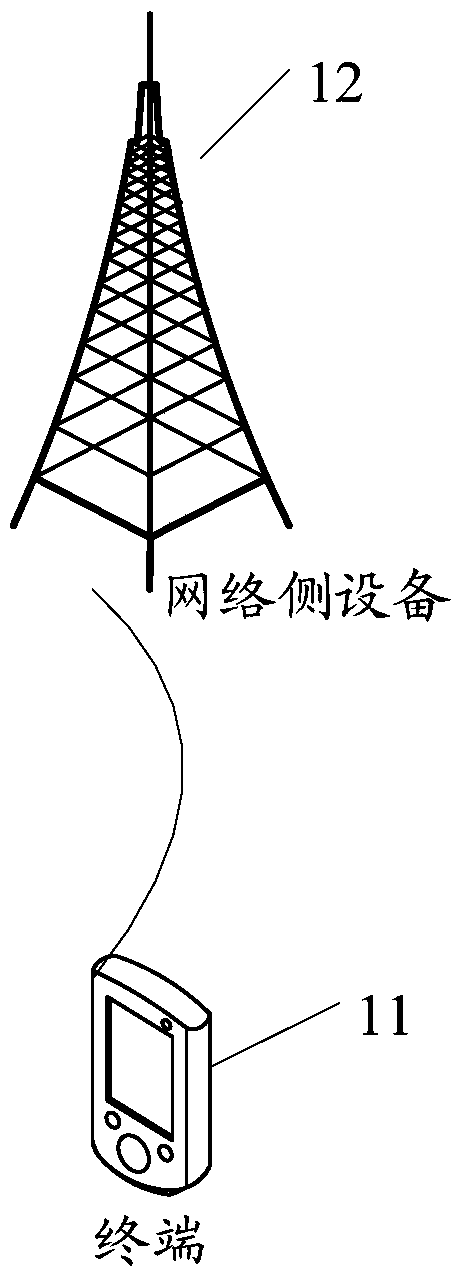Signal receiving method, signal sending method, terminal and network side equipment
A network-side device and signal receiving technology, applied in the field of communication, can solve the problem of high power consumption of the terminal
- Summary
- Abstract
- Description
- Claims
- Application Information
AI Technical Summary
Problems solved by technology
Method used
Image
Examples
Embodiment 1
[0317] In this embodiment, the base station configures a processing capability threshold
[0318] Step 1: The base station obtains the processing capability of the terminal.
[0319] Specifically: the processing capability of the terminal includes at least one of the following processing capabilities, which may be the ability to process time, may be the ability to process power consumption, or may be the ability to process energy; otherwise, the embodiment of the present invention does not make a limit;
[0320] The processing capability of the terminal may be the processing capability of PDCCH-only, or the processing capability of the sum of PDCCH and other channels / signals, specifically, the processing capability of PDCCH+PDSCH, or the processing capability of PDCCH+PUSCH The processing capability can be the processing capability of PDCCH+SRS, the processing capability of PDCCH+CSI-RS, the processing capability of PDCCH+TRS, the processing capability of PDCCH+SSB, other cha...
Embodiment 2
[0346] In this embodiment, the base station configures the terminal whether to turn off the radio frequency receiving device or the radio frequency sending device, and the identifier of the cached signal / channel, wherein the above energy saving indication may be the identifier.
[0347] Step 1: The base station configures the terminal to turn off the radio frequency receiving device or the radio frequency sending device, and cache the signal / channel identifier.
[0348] The terminal turns off the radio frequency receiving device or the radio frequency sending device, and the identifier of the buffered signal / channel, if the identifier is configured as an identifier of one, then the UE turns off the radio frequency receiving device or the radio frequency sending device, and buffers the signal / channel; if If the above identifier is configured as identifier 2, the UE does not turn off the radio frequency receiving device or the radio frequency sending device, and buffers signals / c...
Embodiment 3
[0367] In this embodiment, the base station configures an indication of whether the scheduled time resource is the same as the latest time resource, for example: the above-mentioned time scheduling information indication.
[0368] Step 1: Whether the time resource configured and scheduled by the base station is the same as the last time resource identifies the time resource, which may include at least one of K0, K2, S, L, and SLIV; K0 or K2 is used to indicate PDSCH or PUSCH transmission The slot and the slot interval of the PDCCH transmission slot; S is used to indicate the position of the symbol in the slot where the PDSCH or PUSCH is initially transmitted; L indicates the transmission duration of the PDSCH or PUSCH.
[0369] The identifier of whether the time resource configured and scheduled by the base station is the same as the latest time resource may be reported by the UE to the base station, and the base station may use the reported identifier as input by the base stat...
PUM
 Login to View More
Login to View More Abstract
Description
Claims
Application Information
 Login to View More
Login to View More - R&D Engineer
- R&D Manager
- IP Professional
- Industry Leading Data Capabilities
- Powerful AI technology
- Patent DNA Extraction
Browse by: Latest US Patents, China's latest patents, Technical Efficacy Thesaurus, Application Domain, Technology Topic, Popular Technical Reports.
© 2024 PatSnap. All rights reserved.Legal|Privacy policy|Modern Slavery Act Transparency Statement|Sitemap|About US| Contact US: help@patsnap.com










